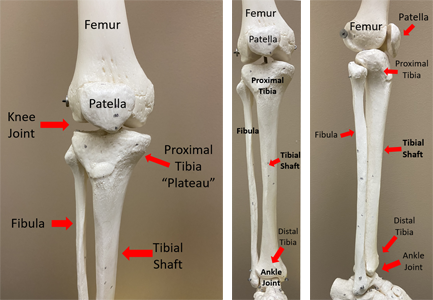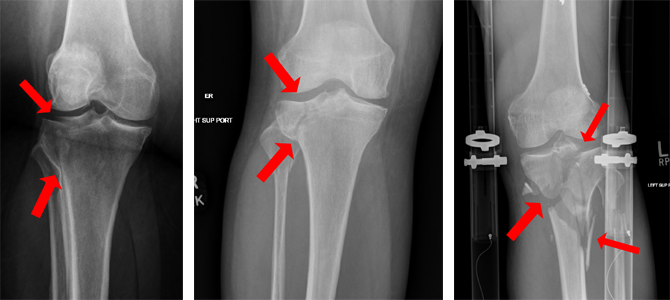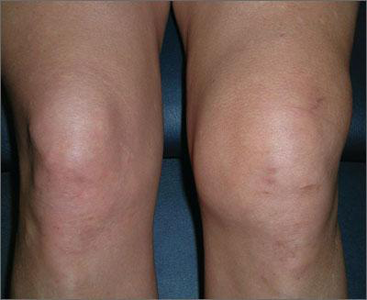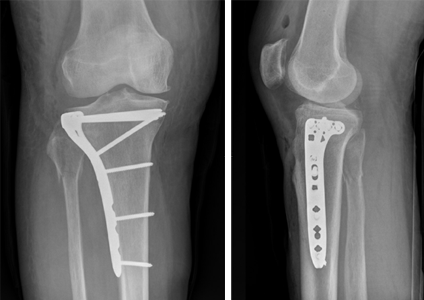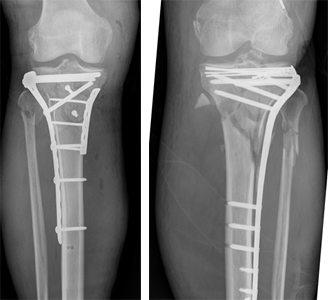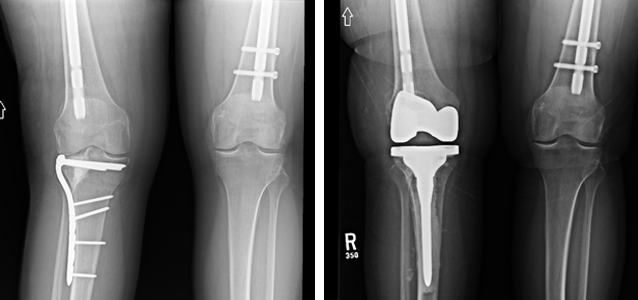Physical Therapy Videos - Knee
What Is It?
The tibial plateau is the flat top part of your tibia bone. The tibia (shin bone) goes from your knee to your ankle. Your knee joint is formed by the bottom end of your thigh bone (femur) and the top end of your tibia. The tibial plateau has a smooth surface covered in cartilage, which helps your knee bend and straighten smoothly. There are two special pieces of cartilage, called menisci, that sit between your tibia and femur. They work like shock absorbers and can get injured. A big blood vessel runs behind your knee, and important nerves are also found there.
How It Happens
A tibial plateau fracture is an injury where you break your bone and damage the cartilage on top of your tibia (bottom part of your knee). This can happen after a fall or a car accident. These high-energy injuries can cause your thigh bone (femur) to push into your tibia like a hammer hitting an anvil.
First Steps
After you break your tibial plateau, it will hurt a lot, and you probably won't be able to walk on it. You'll need to go to an emergency room for help. There, you'll get x-rays and a CT scan. You might go home or stay in the hospital, depending on how bad the break is. You'll likely wear a brace or a splint and won't be able to walk or put weight on your leg. Sometimes, if the break is really bad, you need surgery to put on an external fixator, which holds your leg and bones in the right position.
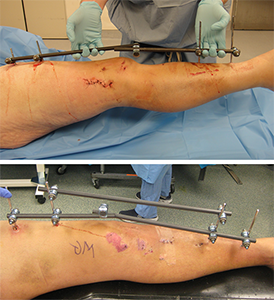
Treatment
Your doctor will decide whether you need surgery or not, based on where the break is and how well it's lined up. If you don't need surgery, you'll wear a brace or splint for some time and won't be allowed to put weight on your leg for six to twelve weeks. If you need surgery, your surgeon will fix your bones with plates, screws, and pins, and might also use extra bone or bone substitute.
Recovery
You won't be able to put weight on your leg for weeks after the break. You may need crutches, a walker, or a wheelchair. You might wear a knee brace for support and work on gentle motion to prevent stiffness. Motion can also help the cartilage heal. You might also go to physical therapy to help with your motion and strength. It is important to follow your surgeon's instructions.
Long Term
Tibial plateau fractures can cause arthritis in the knee joint, leading to pain, stiffness, and trouble with activities. Sometimes the bones don't heal or you may get arthritis. Arthritis is when the cartilage is damaged or wears away and the bones ends touch. This can cause pain and stiffness. You might need a knee replacement to feel better. Stiffness and weakness are common, and physical therapy might help. You may have a permanent limp and need to use a cane or other device. Sometimes, more serious problems need more surgery, hospital stays, or medicine. These issues can include swelling, infection, blood clots, and painful hardware.
Physical Therapy Videos - Knee
More Information
---
Erik Lund, MD
Edited by the OTA Patient Education Committee
All x-rays and pictures taken from the personal collection of Dr. Lund and Christopher Domes, MD

